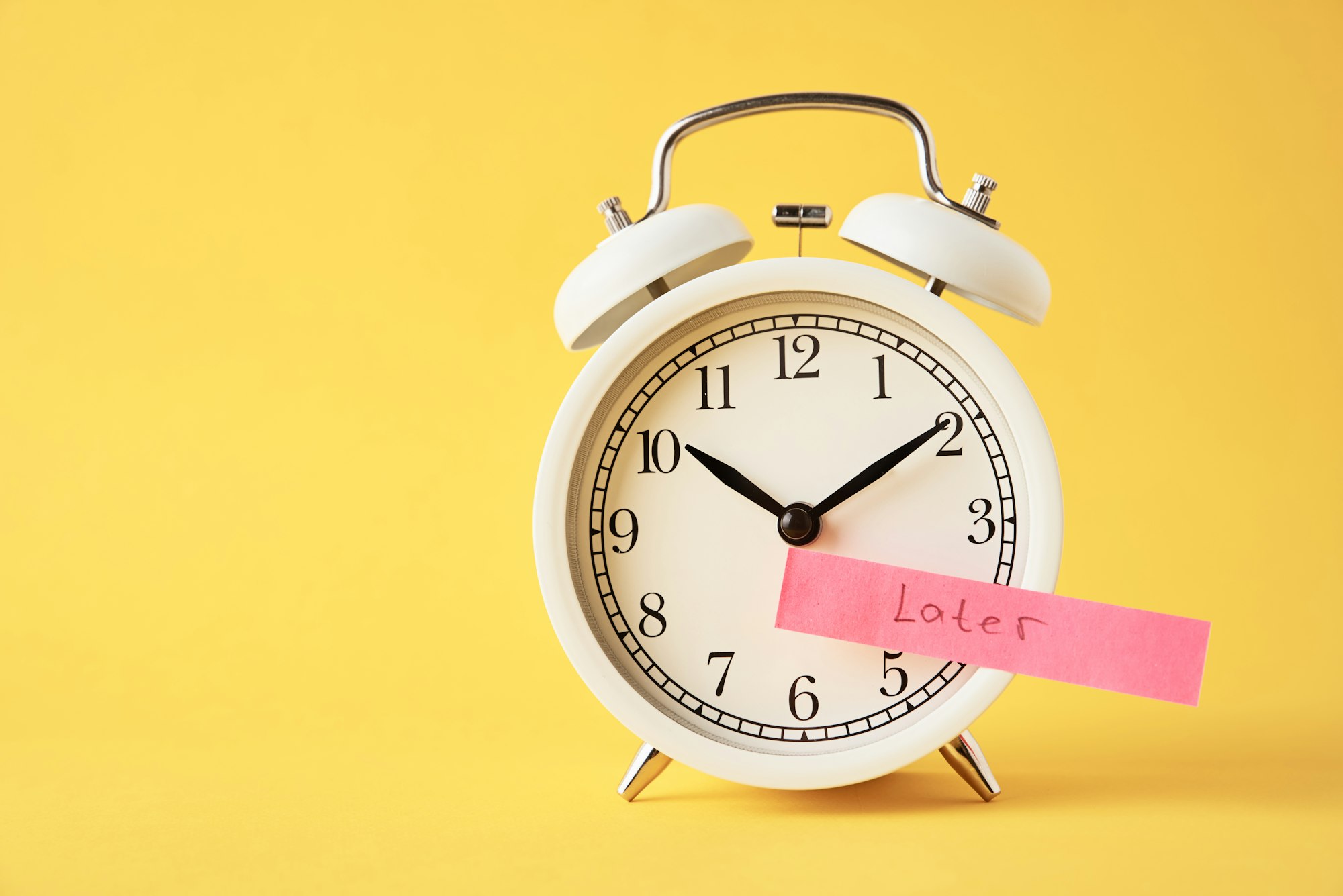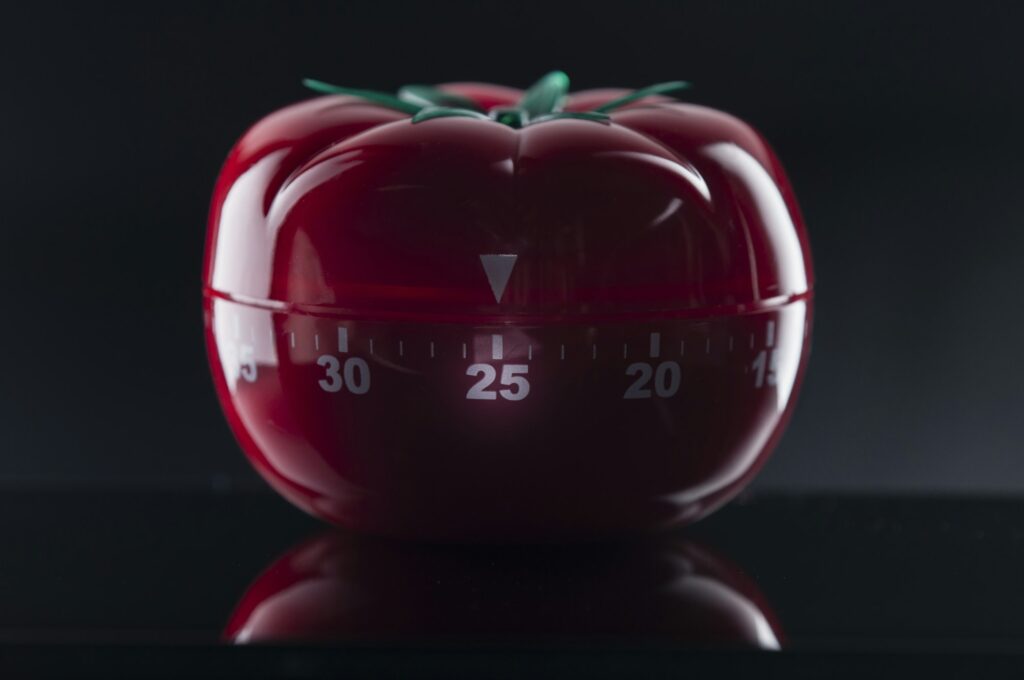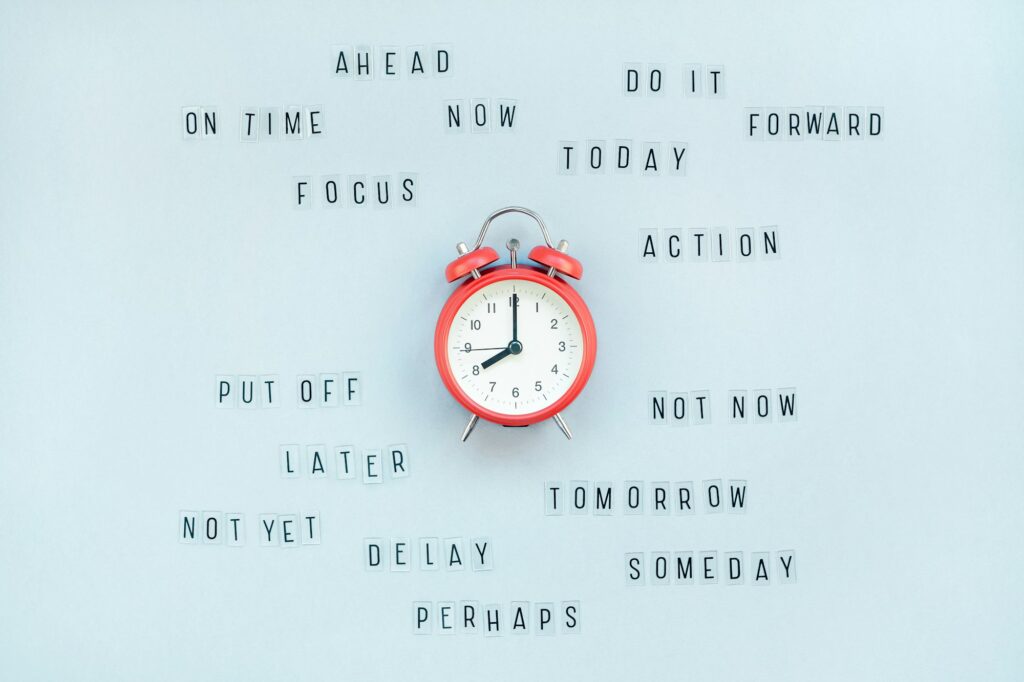
Everyone procrastinates at some point. Whether it’s putting off studying for an exam or delaying household chores, procrastination is a common hurdle in our day-to-day lives.
However, understanding effective strategies to combat this tendency can significantly boost your productivity and overall well-being.
Think about these insightful words from author Karen Lamb:
“A year from now you may wish you had started today.”
By integrating certain habits and techniques into your routine, you can begin to overcome procrastination and make the most of each day.
Ready to dive in? Let’s explore some highly effective strategies that can help you stop procrastinating and start achieving your goals!

Procrastination often stems from a mixture of internal and external factors such as lack of self-control and unrealistic workloads. To tackle this, begin by identifying the reasons behind your procrastination.
Are you overwhelmed by the magnitude of the task? Break it down into smaller, manageable parts. This not only makes the task seem less daunting but also gives you a sense of accomplishment with each completed section.
An effective strategy is to schedule the most important tasks first. By prioritizing crucial activities at the start of your day, you leverage your peak productivity times.
Commitment is key—only schedule tasks you genuinely intend to accomplish, otherwise, it becomes easy to push them aside.
Additionally, consider the impact of your environment. Are constant interruptions derailing your focus? Create a workspace that minimizes distractions. This might mean setting boundaries with others or using tools that limit your online distractions.
Often, procrastination is a result of feeling pressure to complete a task. Instead of waiting for that pressure to build up, use tools like journals and to-do lists to manage your time proactively.
Keep a journal to track your progress and reflect on what works best for you.
Lastly, practice self-compassion. Understand that setbacks are a normal part of the process. When things don’t go as planned, don’t be too hard on yourself. Remind yourself that progress, no matter how small, is still progress.
When it comes to boosting your productivity, there’s no one-size-fits-all solution. However, there are several tried-and-true strategies that can help you get more done in less time.

The Pomodoro Technique is a time management method that breaks your work into intervals, traditionally 25 minutes in length, separated by short breaks.
This approach helps maintain focus and prevent burnout. After completing four intervals, take a longer break. This not only makes your work feel more manageable but also keeps your energy levels up throughout the day.
Invest in tools that can streamline your workflow. Apps like Todoist, Trello, or even a good old-fashioned planner can help you keep track of your tasks and deadlines.
Digital tools often come with reminders and progress tracking, which can further motivate you to stay on top of your responsibilities.
Setting specific, achievable goals can significantly increase your productivity. It provides a clear direction and something tangible to work towards.
Whether it’s completing a project by the end of the week or finishing a book by the end of the month, having clear objectives helps prioritize your time and effort.
Batch processing is the practice of grouping similar tasks together and completing them in a single session.
For instance, responding to all your emails at once rather than sporadically throughout the day can save time and reduce mental fatigue. This method is particularly useful for tasks that require similar mental processes or tools.
If a task takes less than two minutes to complete, do it immediately. This helps prevent small tasks from accumulating and becoming overwhelming.
Over time, you’ll find that addressing minor tasks right away can free up significant mental space, allowing you to focus on more substantial projects.
In today’s digital world, distractions are abundant. Create a workspace that minimizes interruptions.
This might mean turning off notifications on your phone, using website blockers for distracting sites, or even setting specific hours for deep, focused work.
Reducing distractions will help you maintain a higher level of productivity throughout your day.
Procrastination can be an elusive foe, sneaking into your daily routine and sapping your productivity without you even realizing it. Here are some actionable tips to help you tackle it head-on:

Your task list can be overwhelming, but prioritizing effectively can bring clarity and focus. Start by identifying tasks that are both urgent and important.
These are the tasks that should be at the top of your list. Scheduling these key tasks at the beginning of your day can prevent procrastination and ensure you’re tackling what’s most critical while your energy levels are at their peak.
Next, consider your energy levels throughout the day when organizing your tasks. Schedule substantial and demanding tasks for your high-energy periods, and reserve simpler, less critical activities for when your energy wanes.
This alignment can boost productivity and help prevent stalling.
Remember, multitasking is a myth. Focus on one task at a time for better efficiency. By giving your undivided attention to a single task, you enhance its quality and complete it faster.
If interruptions are inevitable, plan for them. Assume periodic interruptions and build some buffer time into your schedule. This approach will help you stay flexible and realistic about what you can accomplish.
Additionally, consider blocking out time for specific tasks on a regular basis. This can create a consistent routine that minimizes decision fatigue and keeps you on track.
Commitment is key. Ensure that you only schedule tasks you intend to complete. Being honest with yourself about your capabilities and time constraints will prevent an overfilled schedule and reduce the likelihood of procrastination.
Finally, remember that it’s important to manage your communication availability. Limit distractions by setting specific times to check emails or social media.
This way, you can maintain your focus and dedicate uninterrupted time to priority tasks. By applying these strategies, you can enhance your productivity and significantly reduce procrastination.
Procrastination is a common problem that affects people from all walks of life. Whether you’re a student, a professional, or an entrepreneur, avoiding procrastination can significantly enhance your productivity and well-being.
Learning to manage your time effectively is key to overcoming procrastination, and there are several strategies that can help you stay on track.
Below, we delve into practical techniques you can apply right away to conquer procrastination and achieve your goals.
First, it’s crucial to understand why we procrastinate in the first place. Often, procrastination stems from a combination of factors such as fear of failure, lack of motivation, or feeling overwhelmed by the tasks at hand.
By identifying the root cause, you can address these issues head-on and implement strategies to counteract them.
Breaking down tasks into smaller, manageable steps is an excellent way to start. Rather than focusing on the entire project, concentrate on one small part you can accomplish right now.
This makes the task less intimidating and helps build momentum. Additionally, setting specific deadlines for each portion can keep you on track and prevent the temptation to delay.
Another effective strategy is creating a dedicated workspace free from distractions. Having a space designated specifically for productive activities helps condition your mind to focus when you’re in that environment.
Make sure your workspace is organized and provides all the necessary tools you need to complete your tasks efficiently.

When it comes to overcoming procrastination, a critical strategy is practicing self-compassion and patience. Understand that slip-ups are natural and part of the process.
It’s essential to recognize your efforts and progress, no matter how small they may seem. By being kind to yourself, you create a positive feedback loop that encourages perseverance rather than self-criticism.
Mental well-being should always be a priority. Taking the time for self-care, relaxation, and activities that bring joy can significantly impact your productivity.
When your mental health is nurtured, you’re better equipped to tackle tasks head-on and avoid the procrastination trap.
It’s also crucial to set realistic and flexible goals. Life is unpredictable, so be prepared to adjust your schedule and expectations.
Flexibility helps reduce the pressure of meeting rigid deadlines, allowing you to adapt and keep moving forward, even when things don’t go as planned.
Remember, time management isn’t just about scheduling every minute of your day. It’s about creating a balance that reflects your values and priorities.
By focusing on regular intervals of time for essential tasks and being adaptable, you can manage your workload without feeling overwhelmed.
Lastly, if you find yourself spreading too thin from trying to please everyone, take a step back and reassess your commitments.
Prioritize tasks that align with your goals and values, and don’t be afraid to say no when necessary. Practicing self-compassion also means recognizing your limits and respecting your own needs.
Deadlines can be your best friend when it comes to avoiding procrastination. Instead of viewing them as an ominous conclusion, see them as helpful checkpoints that guide your progress.
Here’s how you can effectively harness the power of deadlines to stay on track:
Remember, deadlines should stretch you just enough to stay productive without causing unnecessary stress. Being realistic and flexible with your deadlines will keep you committed and less likely to procrastinate.
By harnessing the power of deadlines, you’ll find that you can work more efficiently and with greater focus.

Often, the hurdle that needs overcoming is the first step. The Two-Minute Rule, a concept introduced by productivity consultant David Allen, is designed to eliminate this barrier.
The principle is simple: if the action required takes less than two minutes, do it immediately. This straightforward strategy helps reduce mental clutter and prevents small tasks from building up into an overwhelming to-do list.
For instance, if you see an email requiring a quick reply, take those two minutes to respond right away.
By tackling these minor tasks immediately, you make significant strides in maintaining momentum and ensuring that small chores don’t accumulate.
Moreover, the Two-Minute Rule fosters a sense of accomplishment. When you complete even the smallest tasks, your brain gets a little hit of dopamine, the “feel-good” neurotransmitter, which can motivate you to keep pushing forward with other tasks. It’s a subtle yet powerful way to build productivity into your daily routine.
Staying motivated and productive requires setting clear, achievable goals and breaking larger tasks into smaller, manageable steps.
Keep track of your progress, celebrate your accomplishments, and ensure you maintain a healthy work-life balance. Establishing a routine and taking regular breaks can also help sustain your energy and focus.
Avoiding distractions is crucial for maintaining productivity. Create a dedicated workspace free from interruptions, use apps that block distracting websites, and set specific times for checking emails and messages.
Prioritize tasks and stick to a schedule to minimize the time spent on non-essential activities. Remember, practicing mindfulness can help improve your concentration.
To create a productive work environment, start by organizing your workspace to be clean and clutter-free. Ensure you have the necessary tools and resources at hand, and make sure your space is comfortable.
Good lighting, a supportive chair, and a quiet atmosphere are key elements. Personalize the area with items that inspire you, but keep them minimal to avoid distractions.
Absolutely! Setting specific, realistic goals can significantly reduce procrastination by providing clear direction and a sense of purpose.
Break larger goals into smaller, actionable steps, and set deadlines for each task. This not only makes the work more manageable but also creates a sense of urgency, making it less likely for you to put tasks off.
A planner can be a powerful tool to enhance your organization and productivity. Use it to schedule tasks, set deadlines, and prioritize your work. Writing down your tasks can help you visualize your workload and manage your time more effectively.
Regularly reviewing and updating your planner ensures you stay on track and adapt to any changes in your schedule. Consistency in using a planner can transform your productivity habits over time.
Procrastination can feel like an insurmountable challenge, but by implementing effective strategies, you can take control of your time and boost your productivity.
Embrace techniques like the Pomodoro Technique and batch processing, utilize time management tools, and set clear goals to create a structured and manageable workflow.
Remember, it’s essential to limit distractions and practice self-compassion along the way. Prioritize tasks effectively, harness the power of deadlines, and don’t underestimate the benefit of the two-minute rule.
Incorporating these methods into your routine can transform the way you approach tasks, making procrastination a thing of the past. Be patient with yourself, and use the tools and tips that resonate most with your needs and values.
Above all, recognize that overcoming procrastination is a journey that requires dedication, but the rewards of increased productivity and reduced stress are well worth the effort.
Take it one step at a time, and watch as you achieve your goals with greater ease and confidence.


